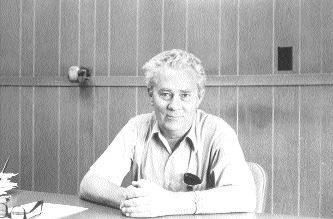Doug Ruttan got to know Canada’s bush country in the most basic of ways: for 40 years he hiked and snow-shoed through it, camped in it, flew over it in bush planes, canoed, and boated across its many lakes.
Before he ended his career as an exploration geologist, he helped find and develop two mines in northern Manitoba, one of which was named the Ruttan Lake mine. To the end of his long life, he remained a scientist at heart, and a lover of the natural world.
Ruttan died Jan. 15, four days short of his 92nd birthday, at his home in Sidney, B.C.
He began his life in the bush while still in university, spending one summer in the mid-1930s canoeing around northern Manitoba, alone, mapping the wilderness for the Geological Survey of Canada.
In later life, he loved recalling the night that summer when he heard a loud thumping outside his little tent. Certain there was a bear outside, he silently reached for his shotgun and gingerly pulled back the tent flap. There in the moonlight was a large jackrabbit, thumping away with its big hind leg.
The challenges facing a Canadian geologist in those years weren’t always so benign. Still, Ruttan had a passion for exploration geology and for the bush that never wavered in his long career.
Ruttan was raised in rural Manitoba and Saskatchewan, the son of a school principal. He set his heart on geology and got a master’s degree in science from the University of Manitoba in 1936 before heading north for good.
At that time, at the height of The Great Depression, there weren’t many good jobs for a starting-out geologist. He moved from job to job for several years, even working as a miner’s helper underground for a few months, before getting his big break: the job of geologist for Madsen-Red Lake Gold Mines in Madsen, Ont. He started that job in January 1939, bringing his new bride Isobel with him.
After a few years in Madsen, the Ruttans moved to Red Lake. In 1948, with four young daughters in tow, they moved again to the gold mine at Snow Lake, Man. In 1951, Doug became chief geologist for Sherritt Gordon Mines at its new nickel mine in Lynn Lake, where he stayed until his retirement in 1975.
In the 1960s, Sherritt started looking for mines around the world. Ruttan spent months at a time working in South Africa, Australia and the rainforests of Guyana.
He played a central role in finding and developing the Fox Lake copper-zinc mine, southwest of Lynn Lake, which operated from 1970 to 1985, and the copper-zinc mine southeast of Lynn Lake that was named for him. The Ruttan mine began production in 1973 and closed in 2002.
Joop Langelaar, a geologist who worked closely with him, says Ruttan’s exploration staff decided the new mine should be named after him.
“We in exploration felt, without question, that Doug Ruttan merited this recognition and honour,” says Langelaar, now retired. “After all, he was involved in all the nickel orebodies in Lynn Lake, and in the Fox discovery in 1963.”
Doug and Isobel Ruttan moved to Sidney, B.C., after retirement. After 40 years in the North, a life without snow seemed appealing.
In a 1971 interview with the Winnipeg Free Press, Ruttan called exploration geology the most intriguing, frustrating and yet satisfying job in the world. “You go for long periods of time without finding anything,” he said. “Only your desire drives you. But when you find [a deposit] and it develops into a mine operation, there is nothing quite so thrilling.”
— The author is the daughter of Douglas Ruttan.


Be the first to comment on "Douglas Ruttan"